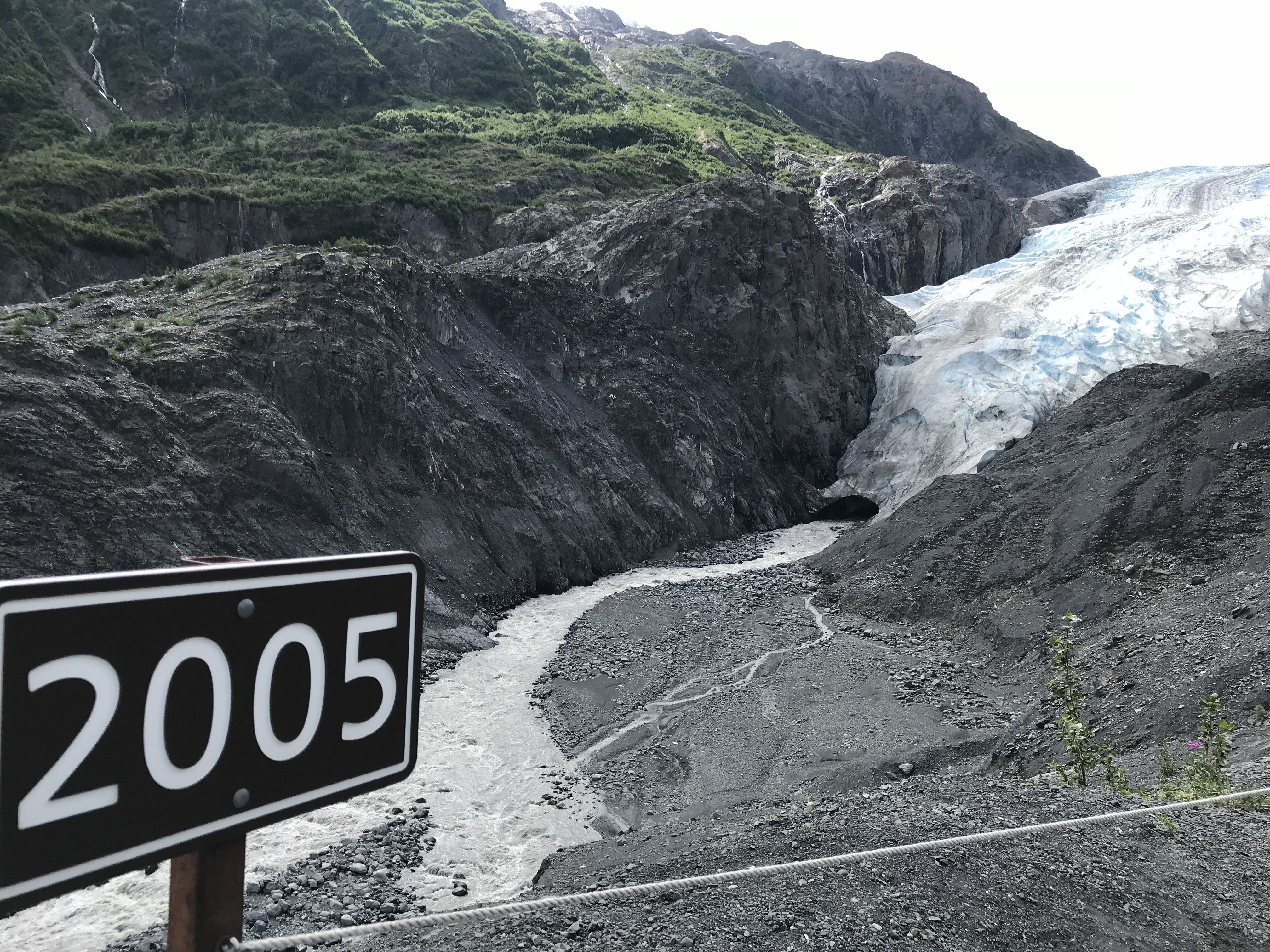Alaska on the frontier of climate change
Although Alaska is called the last frontier and seems isolated from the rest of the world, it turns out to be a perfect place to start our trip. It Is hard to miss the stress between economic benefit, a sustainable way of living and the environment. And climate change is very visible in Alaska.
Climate change
Denali National Park has some of the most stunning landscapes we have ever seen. Vast landscapes with beautiful mountains inhabited by bears, wolves, moose and many other. On a bus tour through the park the guide tells us that the only road through the park is slowly sliding and needs repair. The reason is that the subsurface of the park is currently permanently frozen (permafrost), which holds the soil together. This layer is expected to disappear in the next few decades because of climate change. More dangerous than road slides will be the methane that leaks from the thawing permafrost, which will accelerate global warming. On the way down from a hike on Flattop Mountain near Anchorage we overhear people discussing the possibility of mass migration to Alaska from what they call the ‘lower 48’ here because of dry land and water shortages. These effects of climate change may come earlier than we now expect.
The most visible signs of climate change however are the glaciers. For some it is questionable if the next generation will be able to see them. They are a spectacular sight though with their blue ice. In Seward we hiked the Exit Glacier. In 2015 President Obama also visited this glacier on a tour to warn about climate change. Signs along the route show where the glacier reached before and how fast the glacier has retreated over the last decade. Alaska’s glaciers alone lose 75 billion tons of ice per year. At this pace Alaska’s glaciers alone will lead to more than one millimeter of sea-level rise every 5 years.
Social challenges of resource extraction
Alaska’s history shows the social impact of our economic system. The Anchorage Museum has an excellent exhibition on the history of the Native tribes of Alaska from the Smithsonian. It gives an honest look at how they tried to sustain their culture in the last hundred years after thousands of years of being the original inhabitants of Alaska. Each economic boom brought social change and environmental destruction, from fur trade, to fishing, to mining and oil. With each of these booms the indigenous are actively suppressed by being driven from their land and fishing sites, and being prohibited from speaking their own language for example. At present the young generation is actively trying to restore the rituals, language and culture to keep them alive.
We speak to a native in our hostel. He tells about being bullied in school for his native background. In Alaska there were signs on restaurants with ‘No natives allowed’ long after the civil rights movement. He now also works for a mining company, which allows him to make a good salary and travel around. Less fortunate natives are homeless in Anchorage as we often see. In Nuiqsut at the North slope where ConocoPhillips runs the Alpine oil field, every native person receives well over $10,000 a quarter in exchange for the extraction of oil on their land. This does not encourage them to work and with their old ways of subsistence gone, a lot of them resort to alcoholism and other substance abuse. Their social position also leads them to be sex trafficking victims, as there are a lot because of the male dominated oil and fishing industries. We learn this from a lady we meet who works with the victims as a social worker.
Although there is no doubt that economic booms have brought wealth and development to Alaska, it is also clear to see the unequal distribution of it and the effect it has on our climate. And with that comes the question on how long we can keep going on if we want to enjoy the wild and beautiful nature here.

